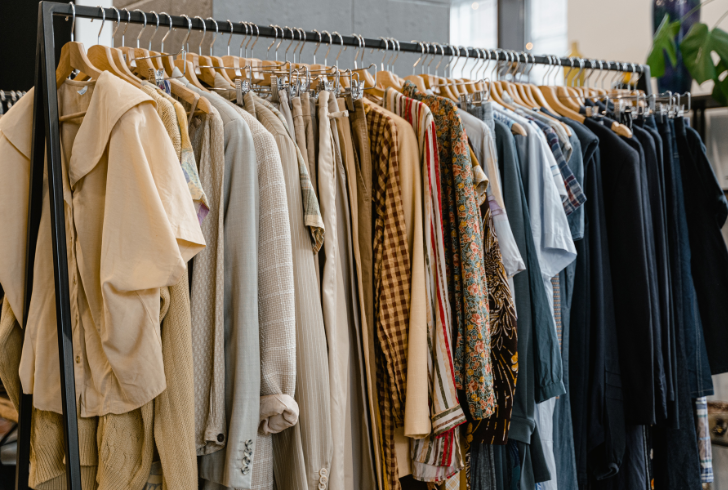The fashion industry is rapidly evolving, with sustainability and environmental responsibility at the forefront of this transformation. One of the key drivers of this shift is the rise of circular fashion practices, which aim to reduce waste, minimize environmental impact, and prolong the lifecycle of garments. From second-hand clothing to innovative recycling methods, fashion industry innovations are paving the way for a more eco-friendly future. In fact, second-hand clothing is expected to account for a significant portion of the global fashion market, signaling a major shift in consumer behavior.
According to a report, global sales of pre-owned clothing reached $211 billion in 2023, marking a 19% growth from the previous year. This trend is expected to continue, with projections suggesting that the market could grow to $350 billion by 2027. These figures highlight the growing importance of sustainability and conscious consumerism in the fashion industry. In turn, this shift is encouraging companies to explore new ways to embrace circular fashion practices and innovate within the industry.
Innovative Approaches to Circular Fashion
Sustainability has become a core focus of the fashion world, and several innovations are helping to drive this change. Below are four key innovations that are transforming the way fashion operates and contributing to a more circular economy.
1. Sustainable Leather and Textiles from Plant-Based Materials

One of the most exciting fashion industry innovations is the development of plant-based materials that mimic traditional fabrics. A notable example is a US-based company that has created a sustainable alternative to leather called MIRUM. Unlike conventional leather, which involves harmful chemicals and pollutants, MIRUM is produced using a natural process. It combines plant matter into fibers that behave like synthetics, offering a sustainable alternative to both genuine leather and synthetic options like “pleather.”
The appeal of these plant-based materials lies in their ability to biodegrade, ensuring they don’t contribute to the waste problem caused by synthetic alternatives. As consumers demand more eco-friendly options, materials like MIRUM are becoming increasingly popular in the fashion industry, driving the shift towards more sustainable and ethical production methods.
2. Digital IDs for Fashion
Another breakthrough fashion industry innovation is the use of digital IDs for garments, which helps promote the circular economy. A system called CircularID, developed by Eon Group, gives each garment a unique digital identity that can be tracked throughout its lifecycle. From production to recycling, this system allows for transparency and ensures that clothes can be resold, repurposed, or recycled efficiently.
These digital passports provide essential information, such as fabric composition and care instructions, which makes it easier for recyclers to process the garments when they reach the end of their lifecycle. By enabling a traceable and sustainable lifecycle for clothing, CircularID contributes to reducing waste and increasing accountability within the fashion industry.
3. Reducing Excess Inventory with Smart Technology
Excess inventory is a significant problem for fashion brands, often resulting in waste. However, new software solutions are helping companies tackle this issue by making inventory management more efficient. One such innovation comes from Queen of Raw, a company that has developed a supply chain solution called Materia MX.
This platform allows fashion brands to manage their excess stock by automating the buying, selling, reuse, and recycling of unused garments. By streamlining this process, companies can reduce waste, save money, and maximize the use of available resources. Innovations like Materia MX are crucial for minimizing waste within the fashion industry and promoting a more sustainable approach to production and inventory management.
4. Upcycling – Transforming Old Garments into New Products

The ability to break down old garments and repurpose their materials is another key development in the journey toward a circular fashion economy. For example, German company Re-Fresh Global has developed technology that can process polycotton into its base components within minutes. These materials can then be reused to create new garments, as well as a variety of other products, including fragrances, vehicle upholstery, and pharmaceuticals.
Re-Fresh’s innovative upcycling process involves sorting discarded textiles by material and color at specialized factories. Using a patented biotechnology process, the waste is transformed into three biodegradable raw materials: bio-ethanol, nanocellulose, and unwoven textile pulp. These materials are then used in various industries, contributing to a significant reduction in textile waste.
The Future of Circular Fashion
The rise of fashion industry innovations is encouraging the industry to rethink its traditional production models. These advancements, from plant-based textiles to digital tracking systems, are helping to address some of the fashion world’s most pressing sustainability challenges. As consumers become more eco-conscious, the demand for circular fashion practices will continue to grow, driving further innovations in the industry.
While the road to a fully circular fashion economy is long, the progress being made is a positive step toward reducing waste and minimizing the environmental impact of clothing production.




